Cobbold Gorge is situated in part of the Robin Hood Ranch. The scale of things in Australia is indicated by some statistics related to this “not very large” ranch. It is about the size of Hertfordshire (yes about the size of the whole County! at 500 square miles or 330,000 acres or 1,284 sq km), contains three landing strips for planes, four homestead complexes across the farm, 384 kms of cattle fencing, five cattle yards, 65 kms of public roads and 223 km of internal roads and last year had 1200 mm of
rain. The farm runs 12,000 head of Brahman cattle which although looking rather scrawny, are said to do well in this inhospitable climate.
To get here, we drove westwards from Undara along the Savannah Highway and turned south when we got to a small town called Georgetown. 85kms south (50 miles) along increasingly bumpy dirt track 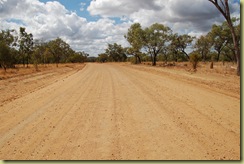
roads (which we drove in 4WD) lies the Cobbold Gorge campsite. Our powered site (this means we can plug the van into mains power and run the aircon, make toast etc) also had its own ensuite toilet and shower – we had gone upmarket because the straightforward power only ones were all taken. The gorge and homestead can only be visited on an organised tour – our guide was one of the most knowledgeable people we have met so far and apart from knowing numerous facts about the farm and the gorge, was also very knowledgeable on flora and fauna and also the uses the local aboriginals had made of plants when they lived in the area.
We also were introduced to the knowledge of the local aboriginal tribes and also to the difficult relationship which Australia has had with the original inhabitants of the continent.
This grave is on the Robin Hood Ranch property and is alongside the old track main road which ran through the property to the North. It marks the grave of a local who died in the early 1870s and the tombstone reads:
Scared to the memory of John Corbett who’s body is interred here and here was murdered by the blacks on 31st May in the 32nd year of his age….. Apparently he was travelling alone, North along the road, carrying gold which he had prospected when he was murdered by a group of “blacks” – they killed him for being on their land and left the gold.
Further on our walk we were introduced to numerous plants and their
native uses. The fruit of the “Gidji Gidji” tree was used to create a miscarriage / contraceptive by Aboriginal Women. The fruit of this plant
(now known as the Cricket Ball or Golf Ball Tree) could be ground up to make “damper” (a sort of bread) which they did in the mortar below which
is carved into the sandstone. Another notch was used for sharpening spears and blades
The leaf of the Sandpaper Fig Tree was used for sanding down
Boomerangs – it really was very rough. The bark from the Paperbark
tree was used to make nets, bags or rope. Other plants were used for medicines, poisons etc etc. Their knowledge of the local flora and fauna is astonishing and their treatment by the incoming settlers seems to have been deplorable. The area is said to have been used for initiation ceremonies by the local aboriginal tribe, hence the presence of some wall
painting – here hand prints made by dipping a hand in fresh ochre which also had the juice from spine flax grass in it as a bonding agent. We also saw (demonstrated with a drop of spit) a grass seed which bores itself into the ground as soon as it is touched by water.
The Gorge itself is a picturesque narrowing gorge which one navigates by
a very thin boat since the gorge narrows to two metres width. It is inhabited by numerous species of fish and some rather fat looking Freshwater
Crocodiles which are said not to be dangerous to humans unless you go near them! A good trip with a very knowledgeable guide.
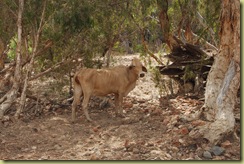
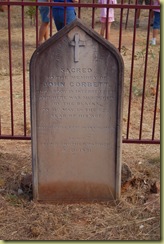
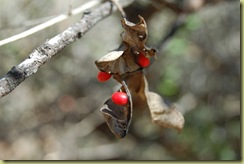

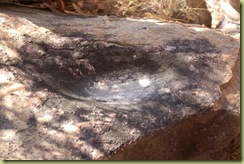
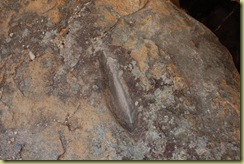
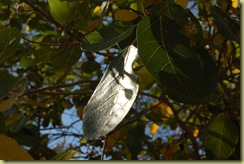
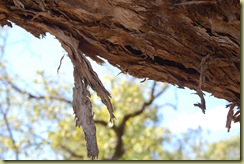

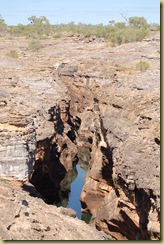

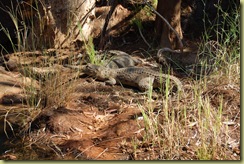
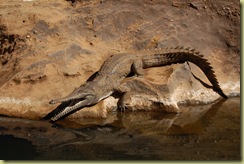
No comments:
Post a Comment